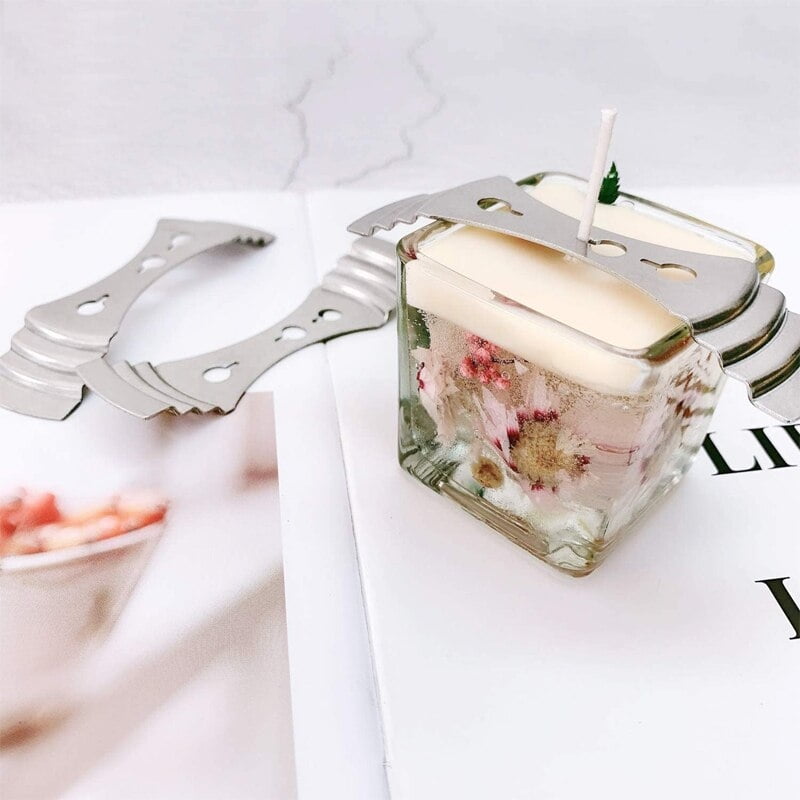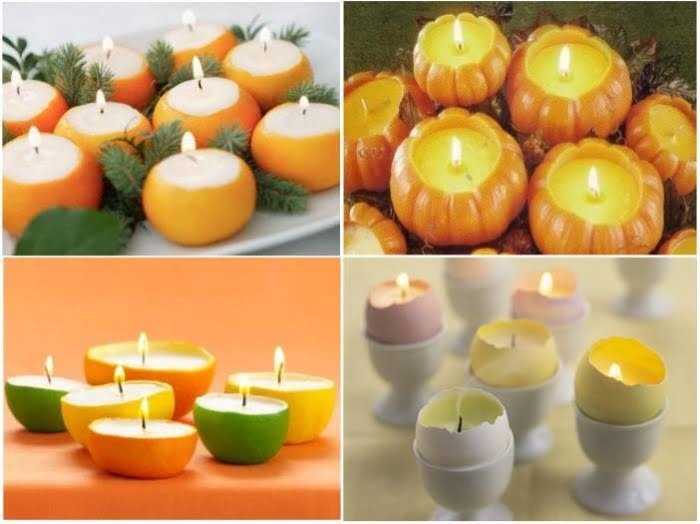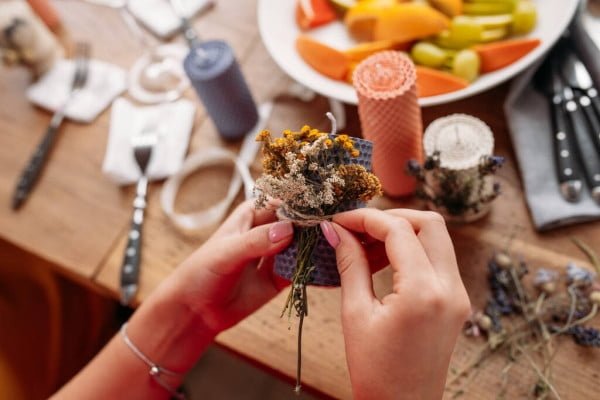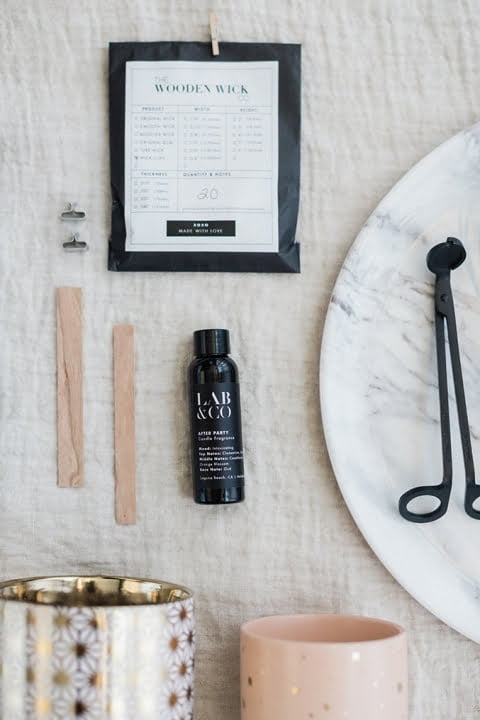Have you ever wondered if you can use candle fragrance while making soap? Many soap makers have pondered this question, and it’s a topic that sparks curiosity for those who enjoy experimenting with different scents and creating unique blends. In this article, we will delve into the possibilities of using candle fragrance in soap making.
Soap fragrance and candle fragrance may seem similar, but they are actually quite different. Candle fragrances are designed specifically for use in candles, whereas soap fragrances are formulated to be safe and skin-friendly. It’s important to understand the distinction between these two types of fragrances when considering their use in soap making.
There are several factors to consider when exploring the compatibility of candle fragrance in soap making. Heat stability is a significant factor, as high temperatures during the soap making process can cause certain fragrances to deteriorate or change in scent. Additionally, some candle fragrances contain ingredients that may not be skin-safe or suitable for use in soaps. It’s essential to carefully evaluate these factors before incorporating candle fragrance into your soap recipes.
Join us as we further investigate whether you can use candle fragrance in melt and pour soap making and explore the possibilities of using candle fragrance in cold process soap making. We’ll provide valuable insights on precautions and guidelines for ensuring safe usage of candle fragrances, along with tips and tricks for successful blends.
Through case studies, we will highlight success stories of soap makers who have ventured into the realm of using candle fragrance. And finally, we will reach a verdict on whether or not candle fragrance is a good choice for soap making.
So if you’re eager to embrace creativity and unleash unique aromas in your soap creations, keep reading as we uncover the possibilities of using candle fragrance while making soap.
Understanding the Difference
When it comes to fragrance in soap making, it is essential to understand the difference between candle fragrances and soap fragrances. While both may seem similar, there are certain factors that set them apart.
Candle fragrances are specifically formulated for use in candles, where they are intended to be burned and release their scent into the air. These fragrances are designed to withstand high temperatures and have a strong throw, meaning they can fill a room with their aroma when burned.
On the other hand, soap fragrances are specially formulated for use in soaps, where they will be applied to the skin or used for personal hygiene purposes. Therefore, soap fragrances need to be skin-safe, non-irritating, and suitable for use on the body.
One of the key differences between candle fragrances and soap fragrances is their composition. Candle fragrances often contain a higher percentage of fragrance oils compared to soap fragrances because they need to have a stronger scent throw when burned. Additionally, candle fragrances may contain ingredients that are not safe for use on the skin due to potential sensitivities or irritations.
| Candle Fragrance | Soap Fragrance |
|---|---|
| Intended for burning | Intended for application on skin |
| Higher fragrance oil percentage | Lower fragrance oil percentage |
| Potential presence of skin-irritating ingredients | Skin-safe ingredients only |
Now that you understand the key differences between candle fragrances and soap fragrances, it is crucial to consider these factors when incorporating candle fragrance into your soap making process.
Making the mistake of using candle fragrance instead of soap fragrance can lead to skin irritations or sensitivities. Additionally, some candle fragrances may not hold up well in soap due to their composition, resulting in a lack of scent retention or a change in fragrance during the curing process. Therefore, it is always recommended to use fragrances specifically labeled for soap making or consult with experienced soap makers who have successfully used candle fragrances in their recipes before.
Factors to Consider
When it comes to incorporating candle fragrance into soap making, there are several important factors to consider. Understanding the compatibility between candle fragrance and soap is crucial to ensure a successful and safe final product. Here are some key factors to keep in mind:
- Skin Safety: One of the most significant considerations when using candle fragrance in soap making is its safety for the skin. Candle fragrances are specifically formulated for use in candles and may contain ingredients that can irritate or sensitize the skin. It is essential to thoroughly research and choose candle fragrances that are specifically labeled as safe for use on the skin.
- Flash Point: The flash point of a fragrance refers to the temperature at which it can potentially combust. This is especially important in soap making processes that involve heat, such as melt and pour or cold process methods. It is crucial to select candle fragrances with a flash point that can withstand the temperatures required during soap making without causing any safety concerns.
- Scent Retention: Another factor to consider is the ability of candle fragrances to retain their scent in soap. Since soap making involves curing and aging processes, some fragrances may dissipate or change over time. It is recommended to test different candle fragrances beforehand by creating small batches of soap and evaluating their scent retention over weeks or even months.
Overall, while using candle fragrance in soap making can add unique aromas, it requires careful consideration due to potential safety concerns and compatibility issues. It is crucial always to prioritize the well-being of consumers by selecting skin-safe fragrances and ensuring proper testing before introducing new products.
To help you make informed decisions, here is a list summarizing these factors:
- Choose candle fragrances labeled as safe for use on the skin
- Check the flash point of candle fragrances
- Test scent retention in soap
By taking these factors into account, you can confidently explore the possibilities of using candle fragrance in soap making and create unique products that delight your customers.
Can You Use Candle Fragrance in Melt and Pour Soap Making?
Melt and pour soap making is a popular method among crafters and beginners due to its simplicity and convenience. It involves melting a pre-made soap base, adding fragrance, colorants, and other additives, and then pouring it into molds to create unique bars of soap. Many people wonder if they can use candle fragrance oils in melt and pour soap making.
The answer is yes – you can use candle fragrance oils in melt and pour soap making. However, there are some factors to consider before incorporating candle fragrances into your soap recipes.
- Compatibility: Not all candle fragrance oils are suitable for use in soap making. While some may work perfectly fine, others may not blend well or cause issues with the texture or performance of the soap. It’s important to choose fragrance oils that are specifically labeled safe for use in both candles and soaps.
- Usage Rates: Candle fragrance oils are typically more concentrated than those formulated for soaps, so you will need to adjust the usage rates accordingly. Adhere to the recommended guidelines provided by the manufacturer or supplier when determining how much fragrance oil to add per pound of melt and pour soap base.
- Performance: Candle fragrances may behave differently in melt and pour soap compared to traditional soap fragrances. They may not retain their aroma as strongly or may fade over time due to the nature of the ingredients used in candle making. Conduct small test batches before committing to larger quantities of candle fragrance oils in your melt and pour soap recipes.
To incorporate candle fragrances into your melt-and-pour creations effectively, follow these steps:
- Start by melting your chosen melt and pour base according to the manufacturer’s instructions.
- Once melted, remove from heat source and let it cool down slightly (around 125-135°F). Adding fragrance oils at this temperature helps preserve their scent.
- Add your desired amount of candle fragrance oil based on usage rates specific to that oil or advised by the manufacturer.
- Stir slowly and thoroughly to ensure the fragrance oil is evenly distributed in the soap base.
- Pour the soap mixture into your chosen molds and allow it to solidify completely before un-molding.
Remember to always read guidelines provided by manufacturers or suppliers for specific instructions and usage rates when incorporating candle fragrance oils into your melt and pour soaps. With careful consideration and experimentation, you can create beautifully scented bars of soap using candle fragrances in melt and pour soap making.
Exploring Cold Process Soap Making with Candle Fragrance
Cold process soap making is a popular method that involves mixing oils and lye to create soap from scratch. Many soap makers are curious about whether they can use candle fragrances in cold process soap making. This section will explore the possibilities and considerations of using candle fragrance in this specific soap making method.
When it comes to using candle fragrance in cold process soap making, there are several factors to consider. One important factor is the safety of the fragrance oil. Not all candle fragrances are suitable for skin contact, as they may contain ingredients that can cause skin irritation or allergic reactions. It’s crucial to choose candle fragrances that are specifically labeled as safe for use in body products.
Another consideration is the performance of the fragrance oil in cold process soap. Some candle fragrances may not behave well in the saponification process and could cause issues such as accelerated trace or discoloration of the soap. It’s recommended to do a small test batch before using a particular candle fragrance in larger quantities.
| Factor | Data |
|---|---|
| Safety | Choose candle fragrances labeled safe for body products |
| Performance | Do a small test batch to check for any issues like accelerated trace or discoloration |
Overall, it is possible to use candle fragrance in cold process soap making if precautions are taken and suitable fragrances are chosen. Soap makers should always prioritize safety and quality when experimenting with different scents. The next section will provide precautions and guidelines to ensure the safe usage of candle fragrance in soap making.
Precautions and Guidelines
When it comes to incorporating candle fragrance into your soap making process, it is important to follow certain precautions and guidelines to ensure the safety of both yourself and your customers. Candle fragrances are not specifically formulated for use in soap making, so it is crucial to take some measures to avoid any potential issues.
Firstly, it is important to note that not all candle fragrances are safe for use in soap making. Some candle fragrances contain ingredients that can cause skin irritations or reactions when used in soap. Therefore, always check the IFRA (International Fragrance Association) guidelines for safe usage levels and recommended restrictions before deciding on a specific candle fragrance to incorporate into your soap.
In addition, stick to using fragrance oils specifically made for soap making whenever possible. These fragrance oils have been tested and formulated to be compatible with soap and will provide a better scent retention compared to using candle fragrances. Soap-specific fragrances also tend to perform better in terms of color stability and longevity.
Another crucial precaution when working with candle fragrance in soap making is proper dilution. Always follow the recommended usage rates provided by the manufacturer when adding fragrance oil to your soap base. Adding too much fragrance oil can lead to product instability or skin irritation, while adding too little may result in a weak scent.
Furthermore, be mindful of any potential interactions between the candle fragrance and other ingredients in your soap recipe. Some ingredients may be incompatible with certain fragrance oils, leading to discolouration or acceleration during the saponification process. Testing small batches before committing to larger quantities is always a good practice.
Lastly, always wear appropriate personal protective equipment (PPE) such as gloves and safety goggles when handling undiluted fragrance oils. Some fragrances may be irritating or sensitizing if they come into contact with the skin or eyes. It is essential to prioritize your safety throughout the entire soap making process.
By taking these precautions and following the guidelines for safe usage of candle fragrance in soap making, you can confidently explore new scent combinations and unleash your creativity while ensuring a safe and enjoyable experience for yourself and your customers.
Experimenting with Candle Fragrance in Soap
Understanding the Basics of Candle Fragrance
Before diving into experimenting with candle fragrance in soap making, it is essential to have a basic understanding of how candle fragrance differs from soap fragrance. Candle fragrances are specifically formulated to be used in candles and are designed to withstand high temperatures and release scent slowly over time.
On the other hand, soap fragrances are formulated to be safe for the skin and to disperse quickly in water. It is important to note that not all candle fragrances are suitable for use in soap making, so it is crucial to carefully select the appropriate ones.
Selecting the Right Candle Fragrance for Soap Making
When choosing a candle fragrance for soap making, there are several factors that need to be considered. First and foremost, ensure that the fragrance oil is safe for use on the skin by checking if it is labeled as “skin-safe” or “body-safe.” Additionally, pay attention to any specific usage guidelines provided by the manufacturer, such as recommended usage rates or potential discoloration or acceleration issues.
To achieve successful blends, it is advisable to opt for candle fragrances that have similar chemical compositions or complementary scent profiles to your desired soap fragrance. This will help ensure that the final product has a harmonious and well-balanced aroma. It may also be beneficial to start with small test batches when experimenting with new candle fragrances in order to gauge their performance and compatibility with your specific soap making methods.
Tips and Tricks for Blending Candle Fragrance in Soap Making
When incorporating candle fragrance into your soap recipes, there are some tried-and-true tips and tricks that can help you achieve successful blends:
- Dilute: It is recommended to dilute candle fragrance oils with a suitable carrier oil before adding them to your soap mixture. This helps prevent any potential skin irritation or sensitization caused by undiluted fragrance oils.
- Test and Adjust: Always perform a small patch test before mass production to ensure that the final soap product meets your expectations in terms of scent strength and longevity. If needed, adjust the fragrance amount or blend ratios accordingly.
- Swirling Techniques: Candle fragrances may react differently with swirling techniques commonly used in soap making, such as the drop swirl or the mica swirl. Experiment with different swirling techniques to find what works best for your specific fragrance blend.
- Cure Time: Keep in mind that some candle fragrances may require a longer cure time to achieve their full scent potential. Be patient and allow sufficient time for your soaps to fully cure before evaluating their final aroma.
By following these tips and tricks, you can achieve successful blends of candle fragrance in soap making, creating unique and captivating aromas that will delight your customers or loved ones.
Case Studies
Case Study 1: Jasmine Dreams Soap
One soap maker, Jane Smith, decided to experiment by using a popular candle fragrance, Jasmine Dreams, in her handmade soap. She carefully followed all safety guidelines and used proper measurements to ensure a successful blend. The result was an exquisite soap with a delightful floral aroma that customers couldn’t resist. The combination of the candle fragrance and soap base created a unique sensory experience that set Jane’s soap apart from others on the market.
Case Study 2: Vanilla Bean Bliss Soap
Another success story involves Sarah Johnson, who incorporated the scent of vanilla bean from a candle fragrance into her cold process soap. Sarah took extra precautions due to the specific properties of the candle fragrance she chose and adjusted her recipe accordingly. The end result was a luxurious bar of soap with a rich vanilla scent that lingered on the skin. Customers loved the indulgent experience they had when using Sarah’s “Vanilla Bean Bliss” soap.
Case Study 3: Refreshing Citrus Soap
Sophia Lee experimented with a citrus-scented candle fragrance in her melt and pour soap making. She carefully tested different ratios of the fragrance to find the perfect balance for her soap base. The outcome was an invigorating soap with zesty and refreshing citrus notes that left users feeling rejuvenated after each wash. Sophia’s “Refreshing Citrus” soap became one of her best-selling products, attracting customers with its uplifting and energizing scent.
These case studies demonstrate that using candle fragrance in soap making can lead to successful results if done correctly. Each beginner or experienced soap maker should approach experimenting with caution and follow proper guidelines to ensure safe usage and avoid unwanted effects such as an accelerated trace or fading fragrances.
It is important to note that not all candle fragrances are suitable for use in soaps, so it is recommended to perform small batch tests before incorporating them into larger soap batches. By taking the time to experiment and find the right candle fragrance for their soap making, artisans can unlock new aromatic possibilities that will captivate customers and elevate their creations to the next level.
The Final Verdict
After exploring the possibilities and factors to consider when using candle fragrance in soap making, it is time to determine whether it is a good choice for this craft. The answer to this question depends on various factors and ultimately comes down to personal preference and safety.
One important factor to consider is the difference between candle fragrance and soap fragrance. While both may have similar scents, they are formulated differently. Candle fragrances are specifically designed for use in candles, which means they may contain ingredients that are not safe for use in soap making. Soap fragrances, on the other hand, are specifically created with safety in mind and are suitable for use in bath and body products.
Another consideration is the compatibility of candle fragrance in different soap making methods. When it comes to melt and pour soap making, it is generally safer to use candle fragrance as long as you follow dosage recommendations and check if the specific fragrance is safe for use in soaps.
However, when it comes to cold process soap making, the high pH levels can potentially cause certain candle fragrance oils to accelerate trace or discolor the soap. It is important to do thorough research and testing before using candle fragrance in cold process soap making.
It is crucial to take precautions and follow guidelines when using candle fragrances in soap making. This includes checking if the specific fragrance oil is skin-safe, performing a small test batch before scaling up production, and following recommended usage rates provided by reputable suppliers. Additionally, keep in mind that some fragrances may cause sensitivities or allergic reactions in individuals, so it’s essential to label your soaps properly with all ingredients used.
Conclusion
In conclusion, it is clear that candle fragrance can serve as a fascinating and unique option for soap making. While there are differences between candle fragrance and soap fragrance, it is still possible to use candle fragrance in melt and pour as well as cold process soap making. However, it is important to consider certain factors like compatibility, allergies, and safety precautions.
By exploring the possibilities of using candle fragrance in soap making, you open yourself up to a whole new world of creativity and aroma combinations. The ability to blend different scents together can result in truly unique and captivating soaps that stand out from the crowd. With careful experimentation and adherence to guidelines, you can achieve successful blends that showcase the beauty of both your candle fragrances and your soap making skills.
To ensure safe usage of candle fragrance in soap making, always remember to conduct patch tests on small areas of skin before using your finished soaps. This will help identify any potential allergic reactions or sensitivities. Additionally, make sure you are purchasing quality candle fragrances from reputable sources that provide detailed information on their ingredients.
Frequently Asked Questions
Can you use candle fragrance on skin?
Candle fragrance is specifically designed and formulated for use in candles, not for direct application on the skin. While some candle fragrances may contain ingredients that are safe for skin contact, it is generally not recommended to apply candle fragrance directly onto the skin.
Although many candle fragrances can smell great, they often have a higher concentration of synthetic substances which may cause irritation or allergic reactions when applied to the skin. It’s always best to use fragrance oils or essential oils that are specifically intended for use in skincare products.
Can you use fragrance oil in making soap?
Fragrance oil can indeed be used in making soap as it adds an aromatic scent to the final product. Fragrance oils are synthetic blends of various aroma compounds, designed to mimic specific scents or create unique combinations. However, it’s important to note that not all fragrance oils are suitable for soapmaking.
Some fragrance oils may contain ingredients that do not hold up well in the soap-making process, resulting in scent fading or even chemical reactions. It is crucial to choose fragrance oils that are labeled as “soap-safe” or explicitly indicate their suitability for soapmaking.
What fragrances can be used in soap?
There is a wide range of fragrances that can be used in soapmaking, offering limitless possibilities for creating beautifully scented soaps. Many popular scents include floral fragrances such as lavender, rose, jasmine, or chamomile, which provide a soothing and pleasant aroma to the soap. Fruity scents like citrus, apple, strawberry, or coconut add a refreshing and energizing touch to the soap bars.
Additionally, herbal fragrances such as eucalyptus, peppermint, tea tree oil can provide a natural and invigorating scent experience. Ultimately, the choice of fragrance is entirely up to individual preferences and creativity; just ensure you select fragrance oils specifically labeled for soapmaking purposes and adhere to recommended usage guidelines for optimal results.

Welcome to my candle making blog! In this blog, I will be sharing my tips and tricks for making candles. I will also be sharing some of my favorite recipes.





